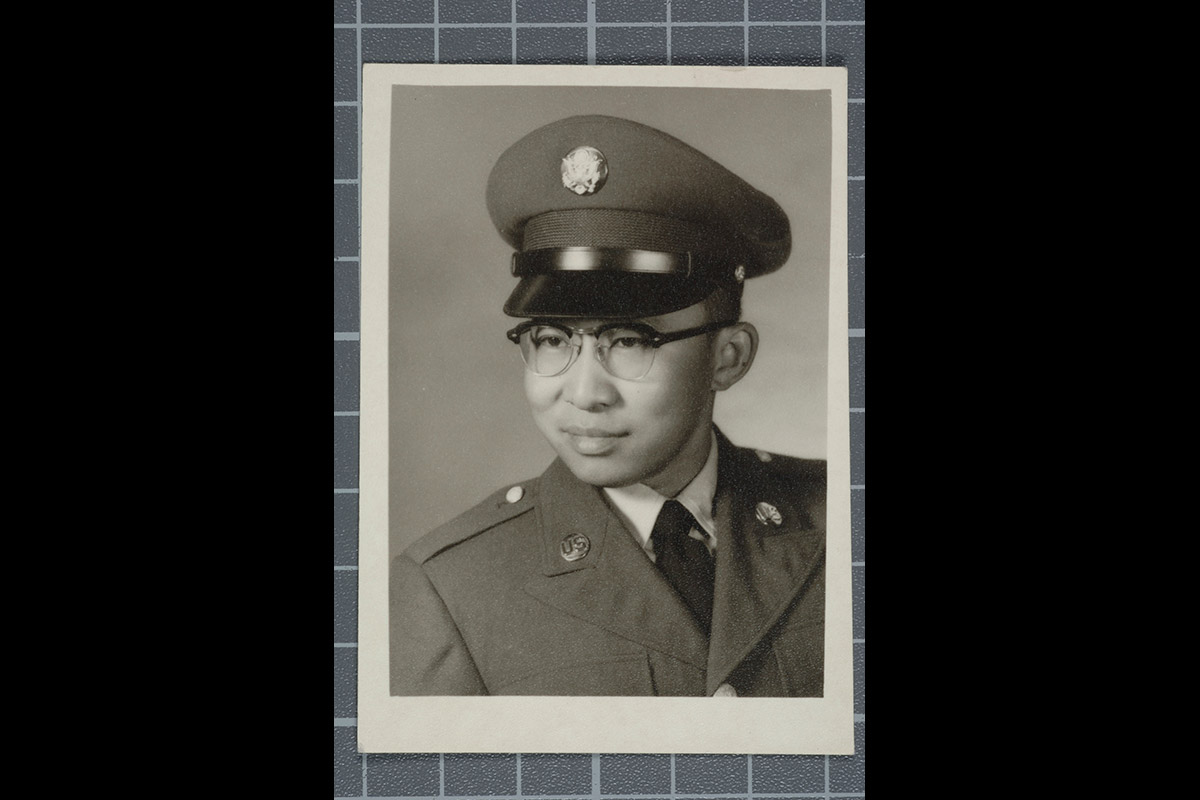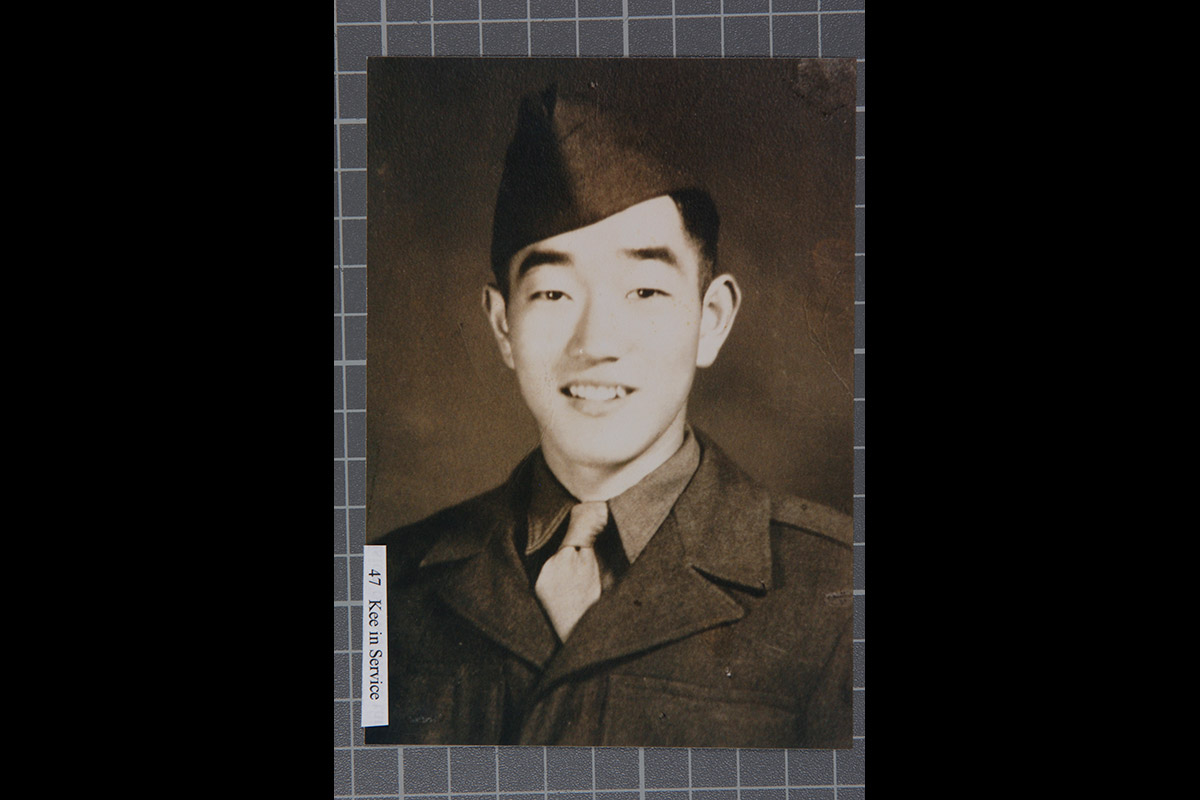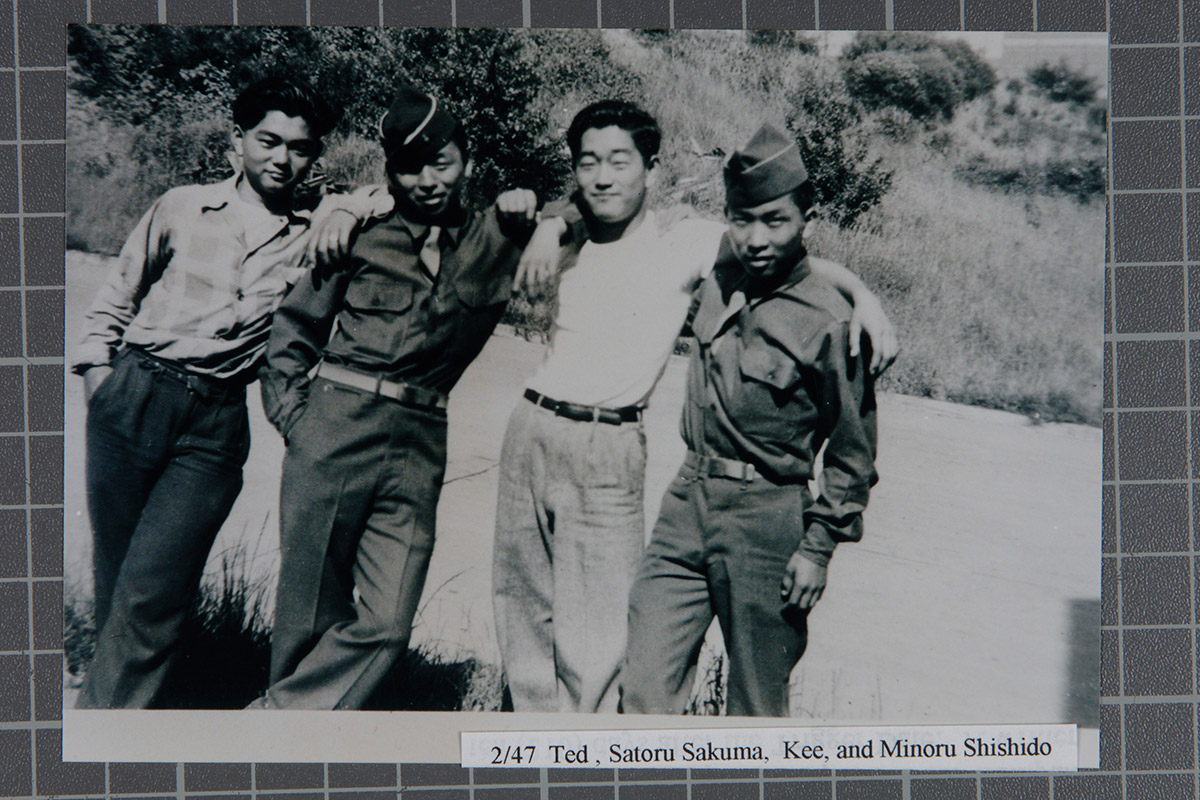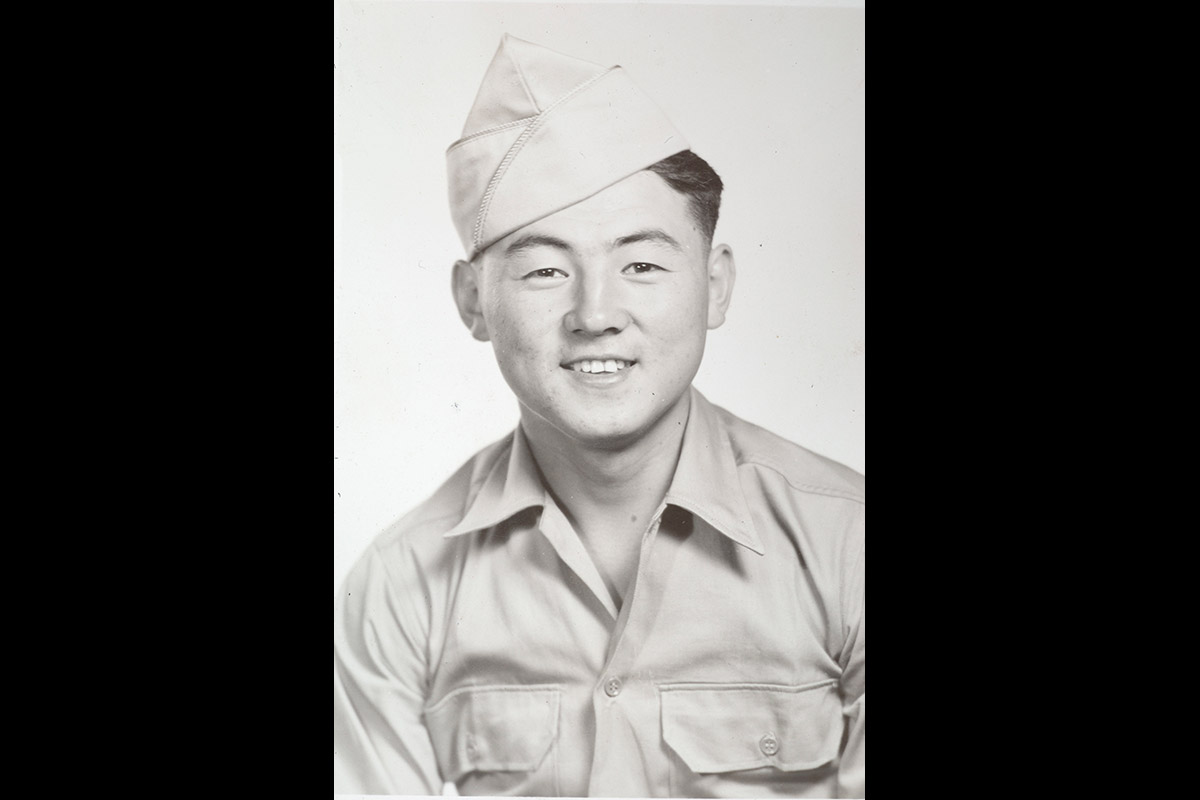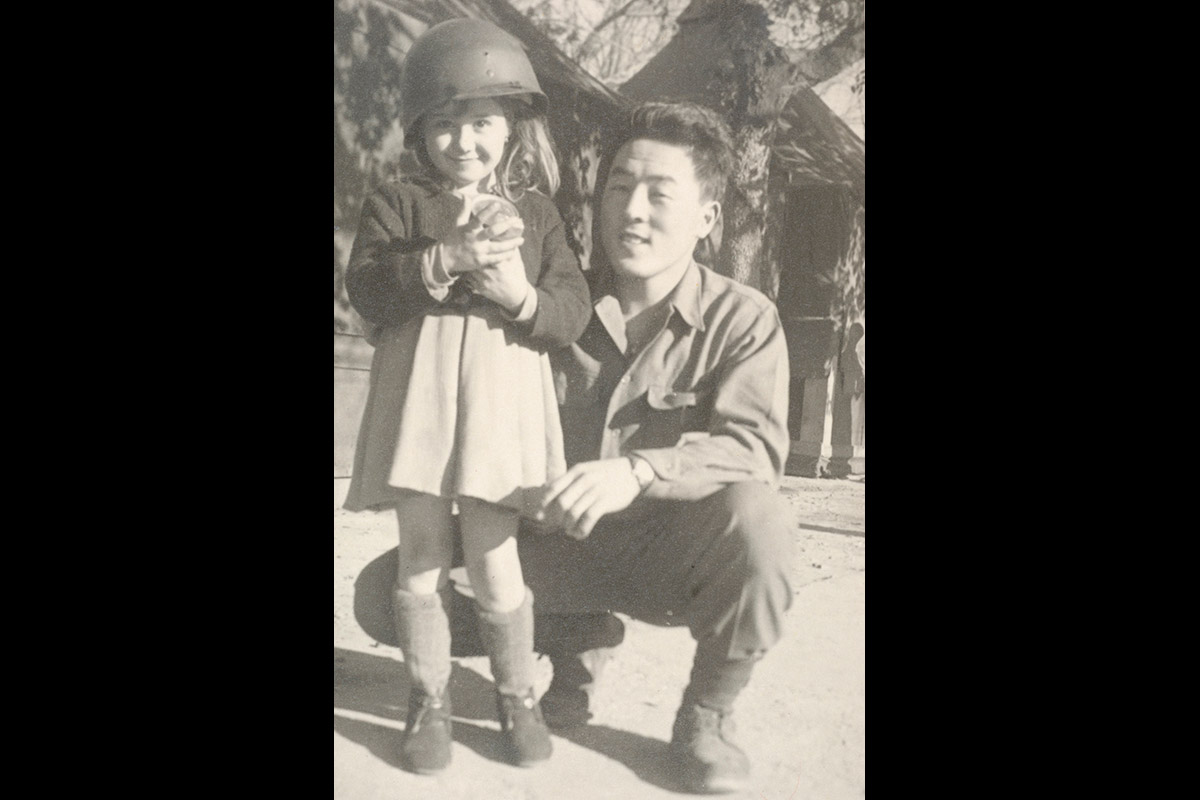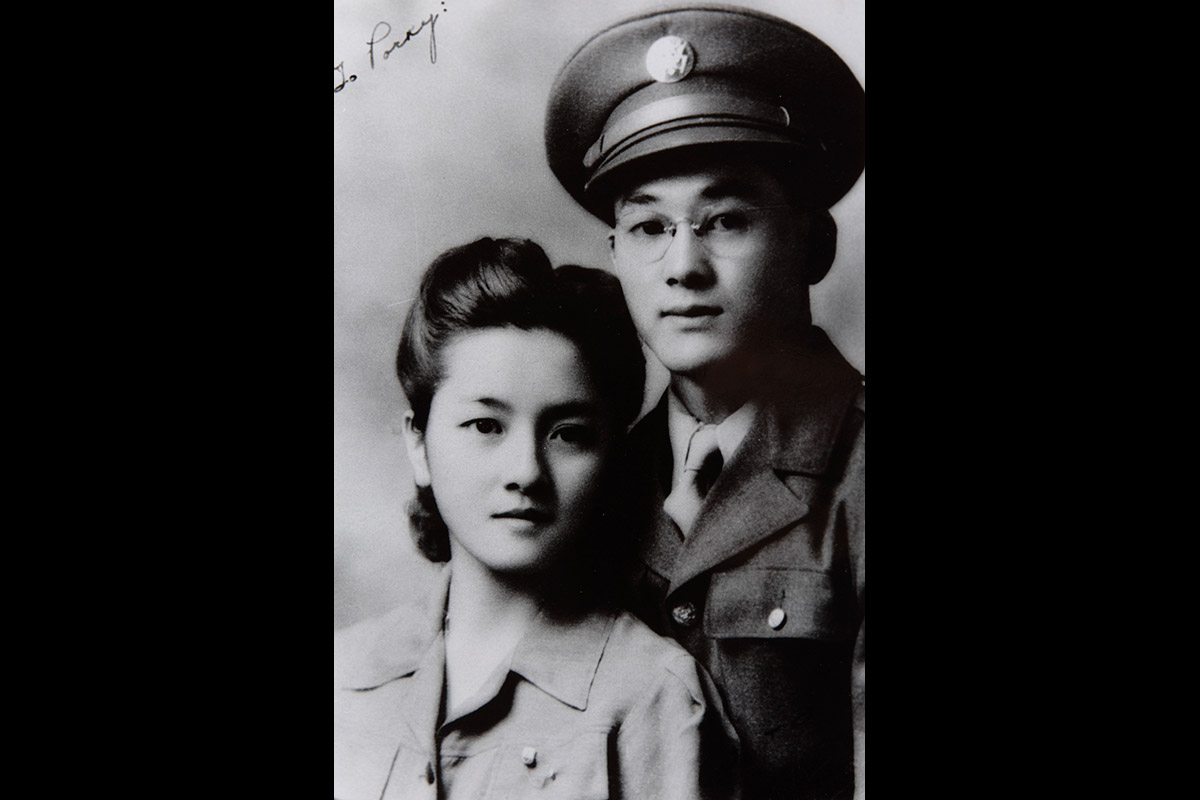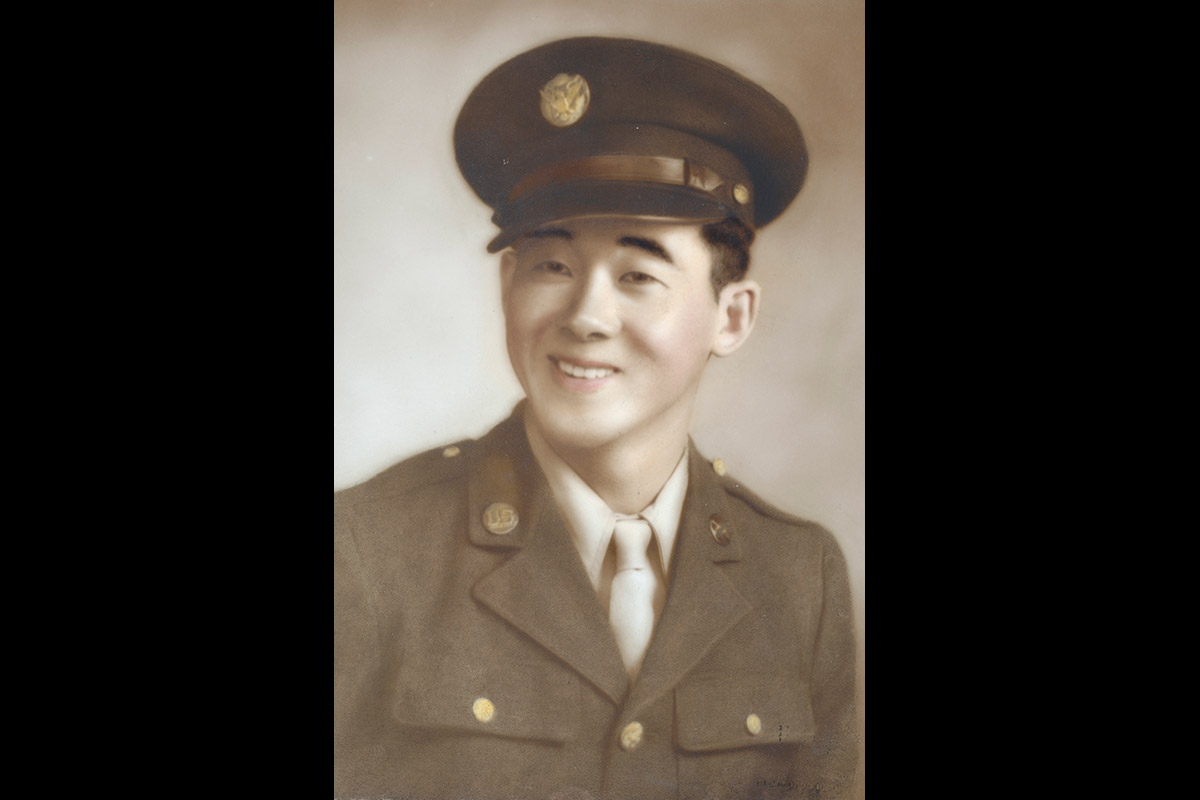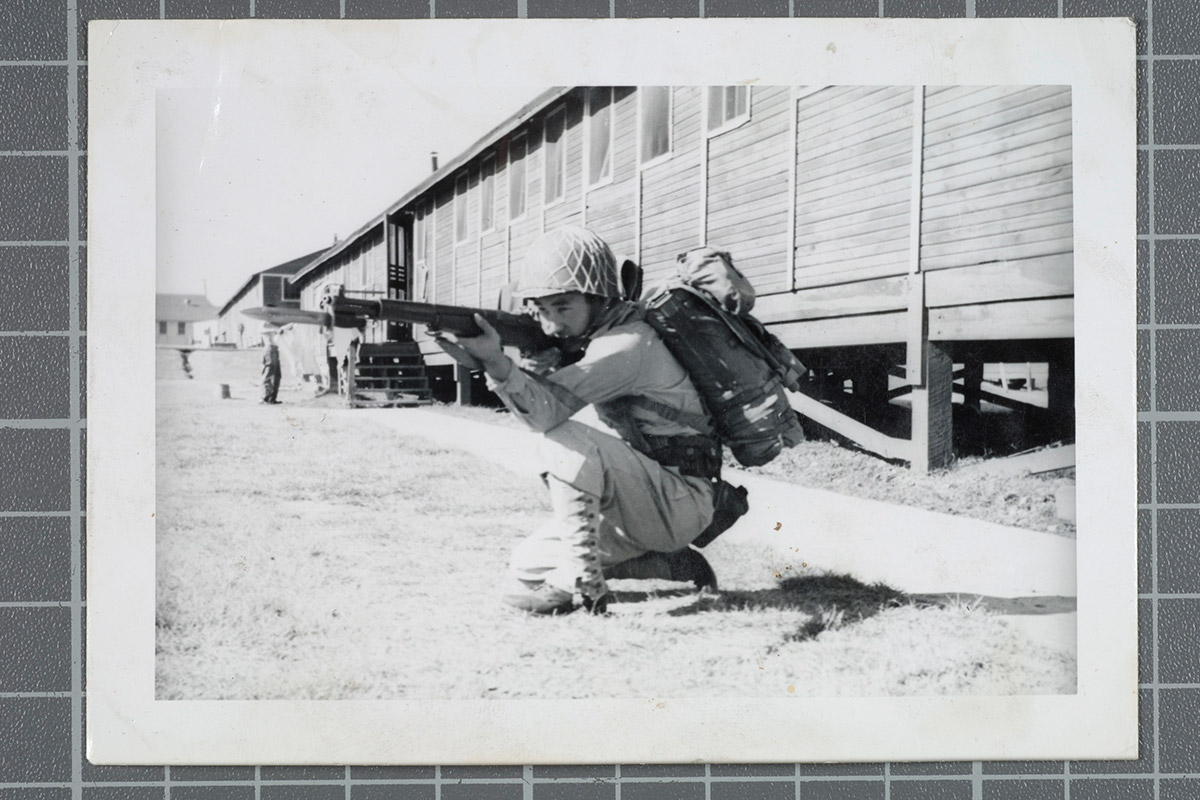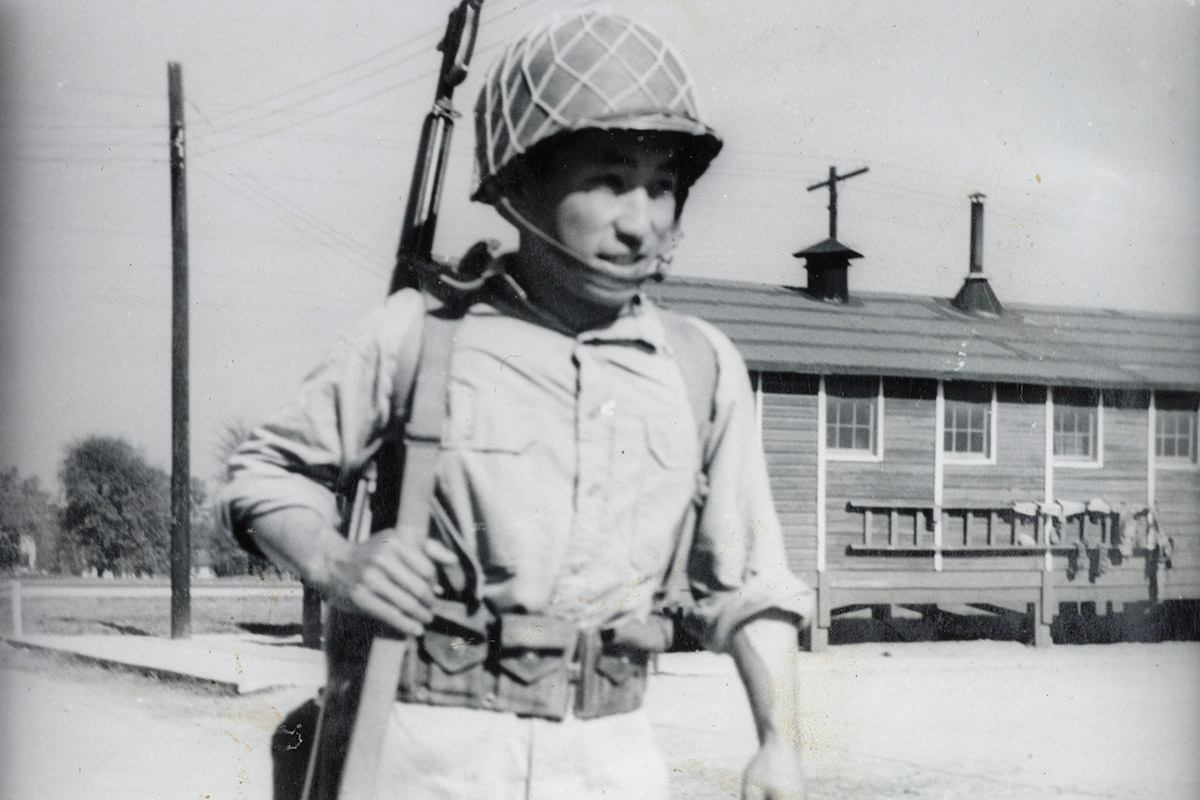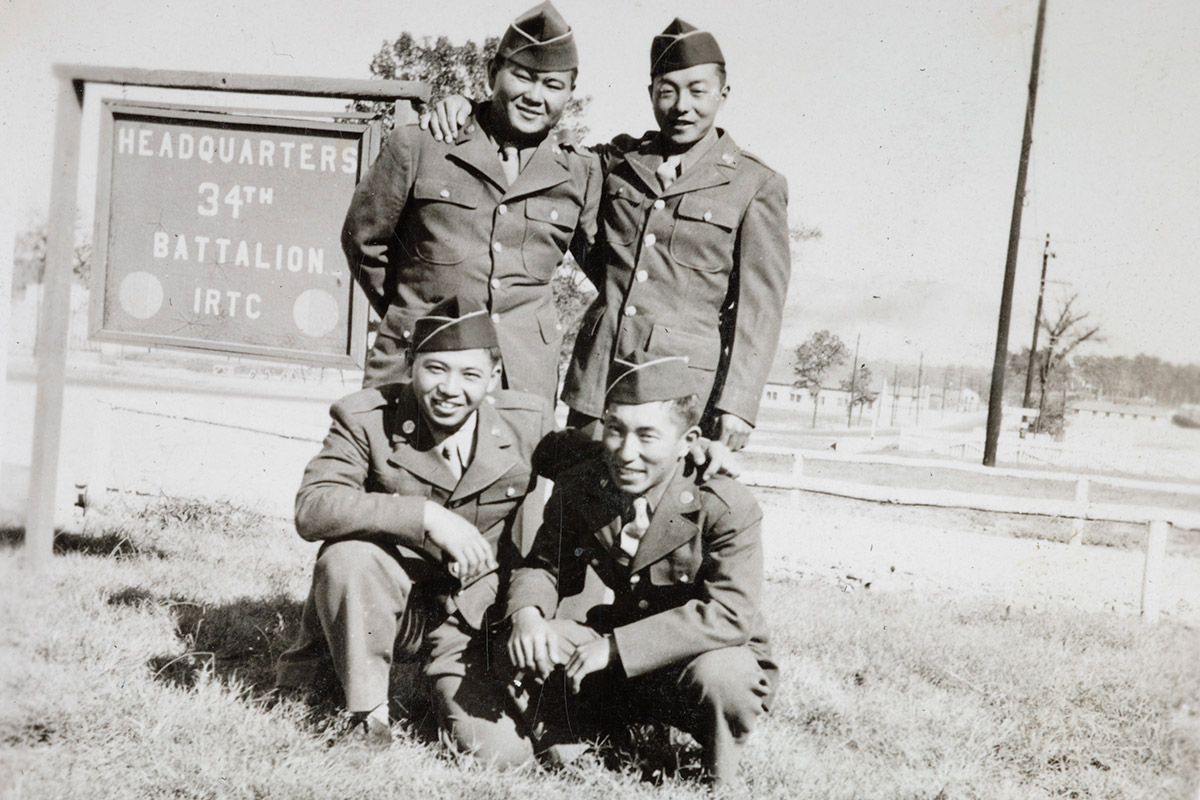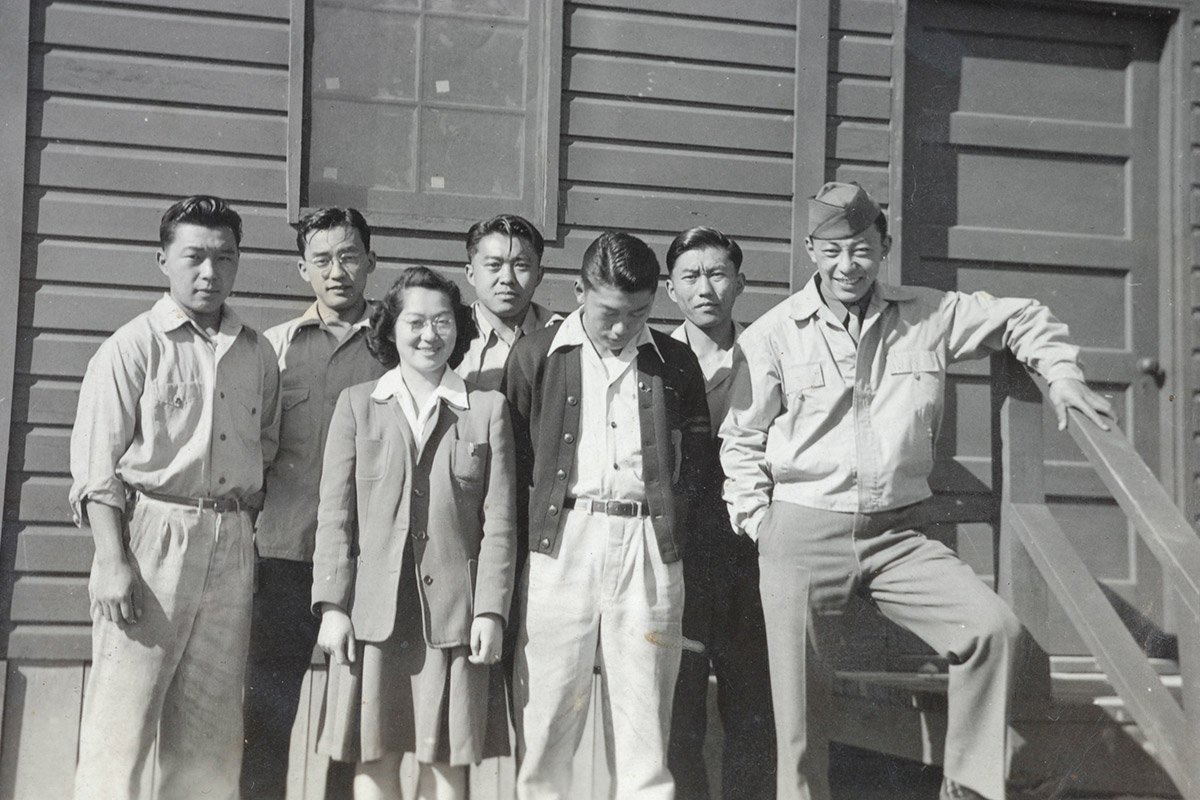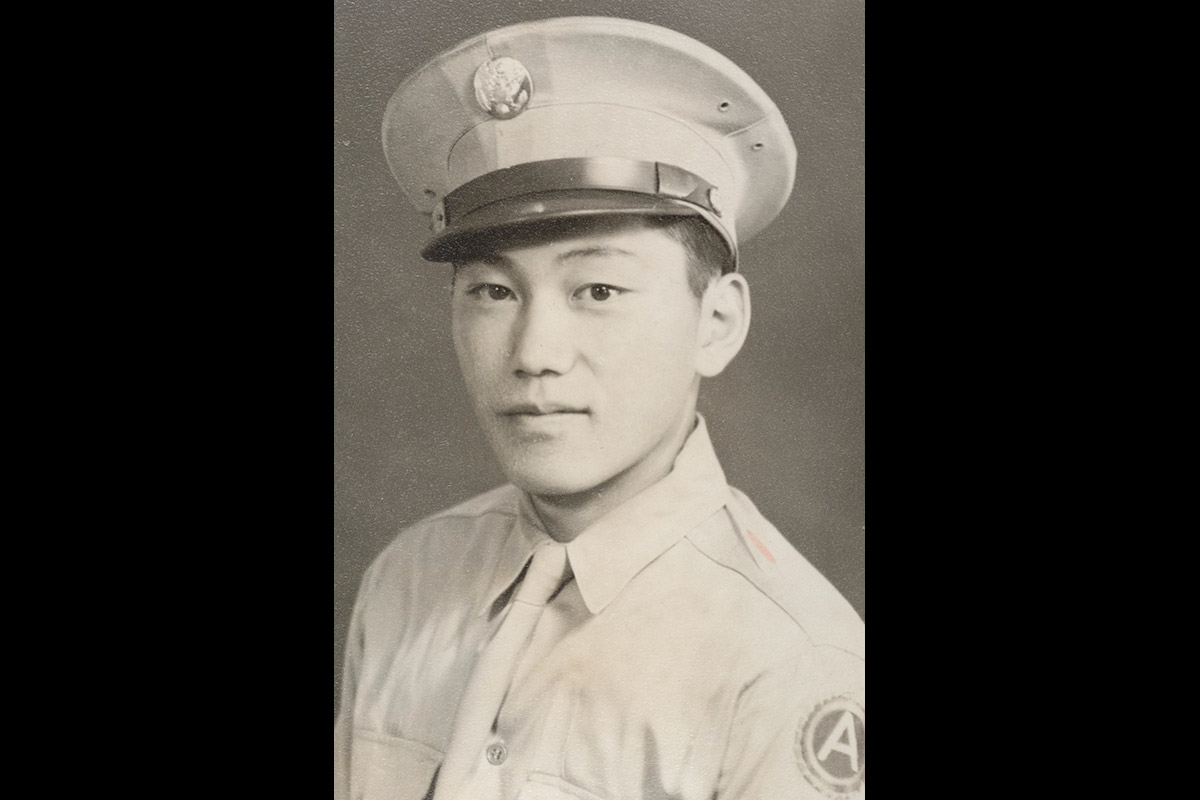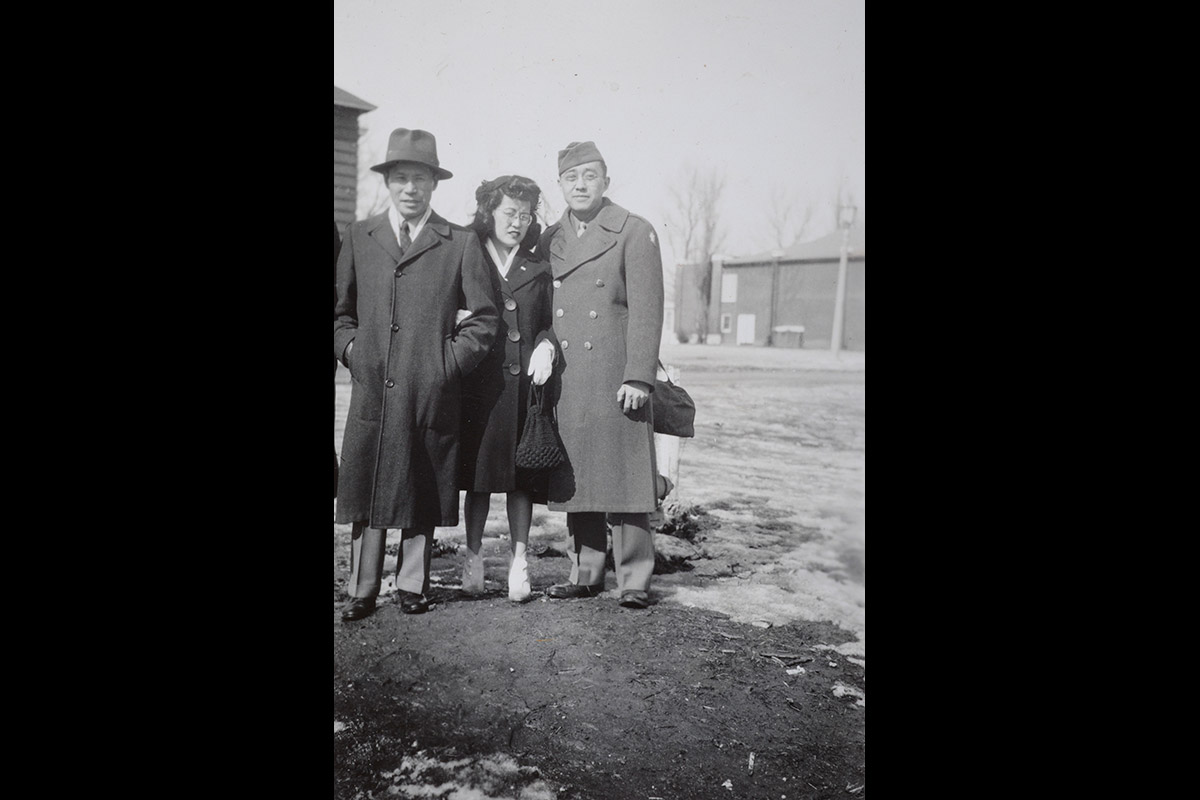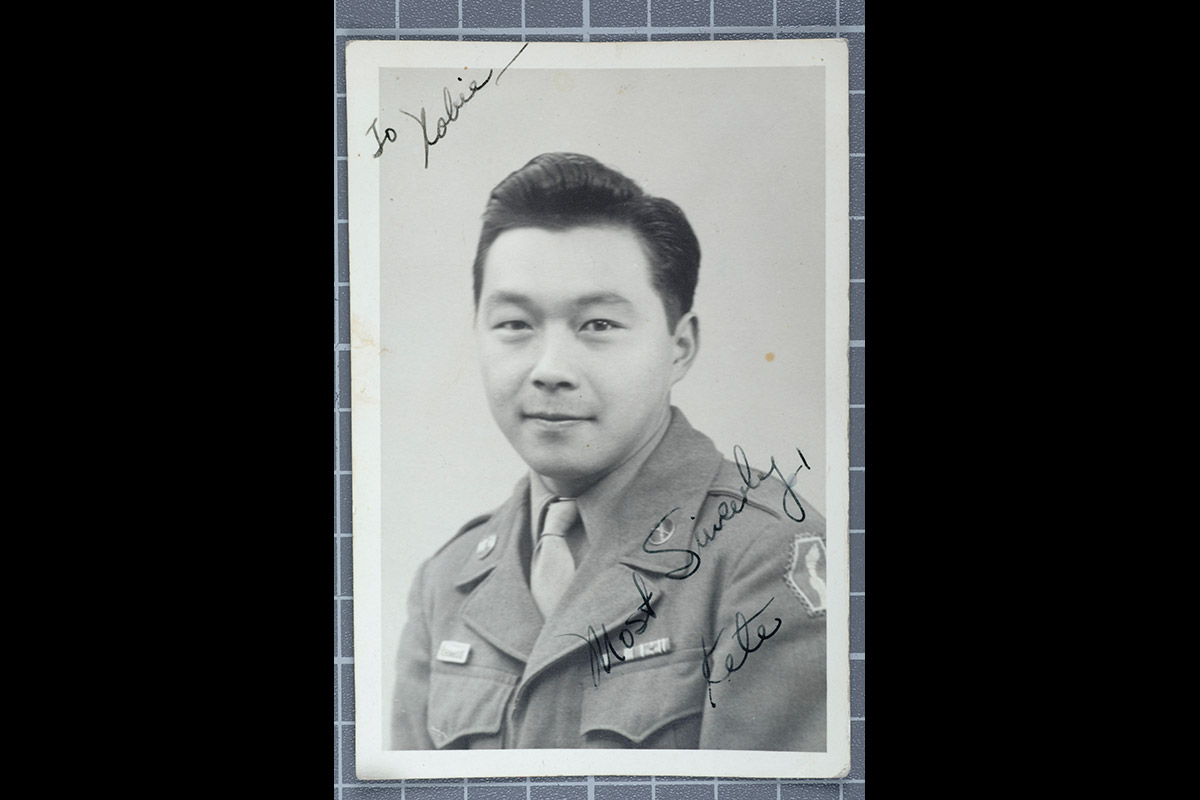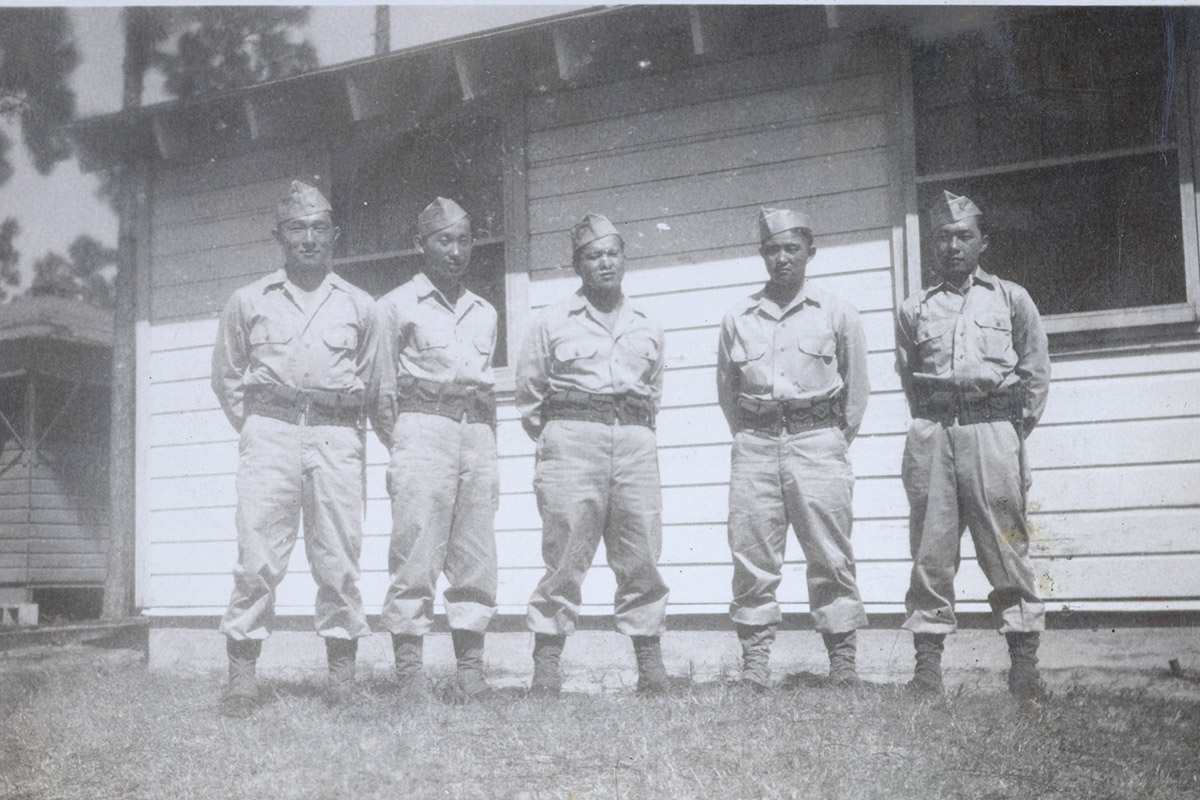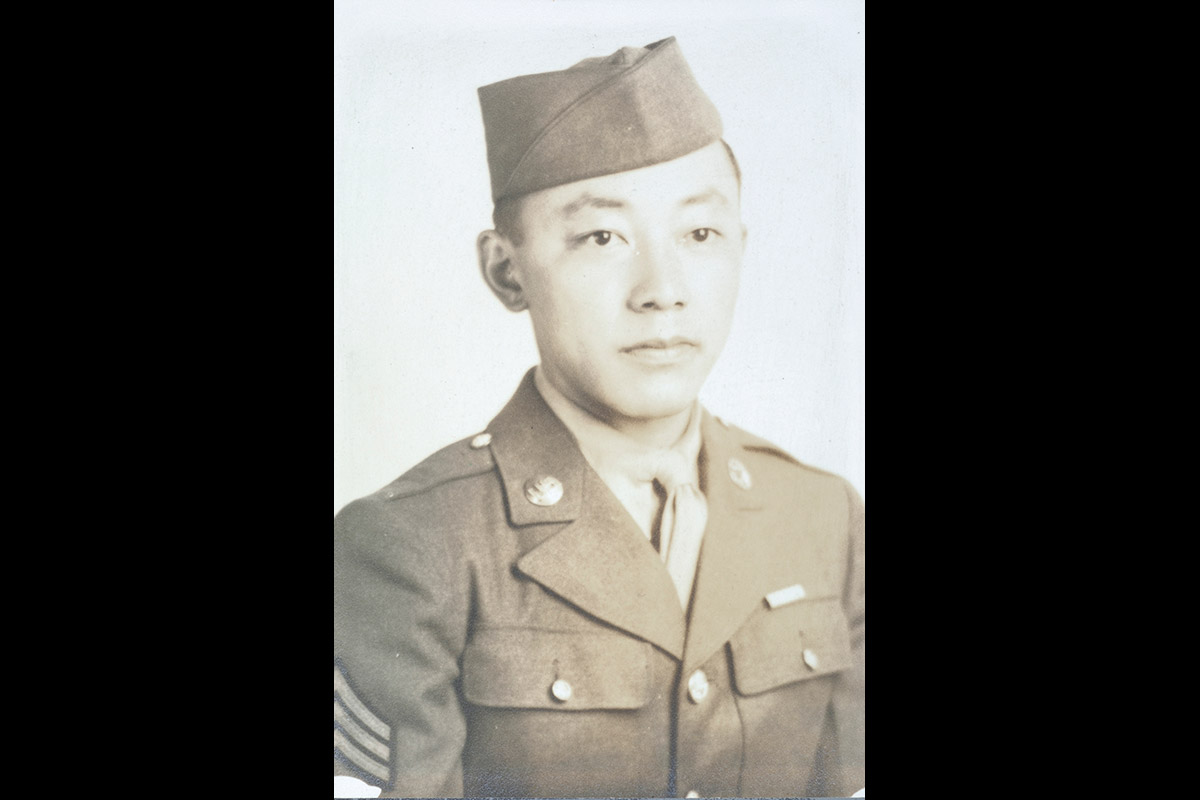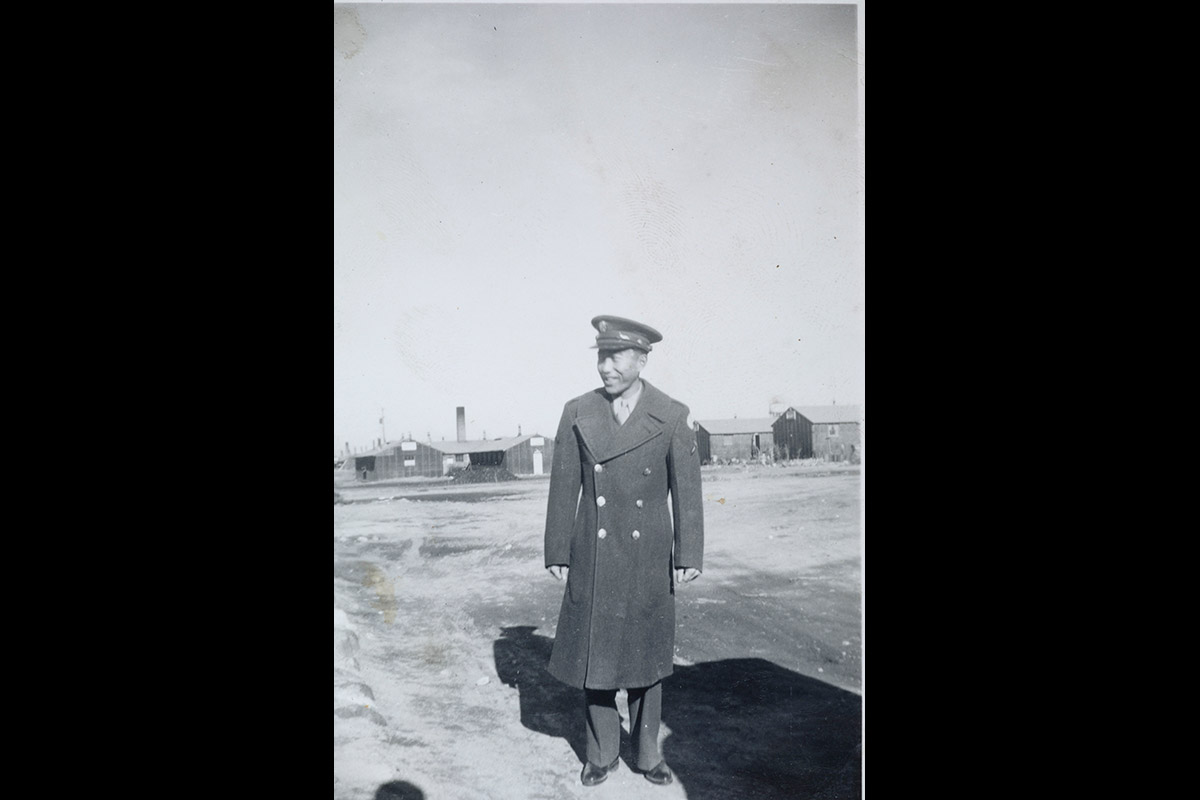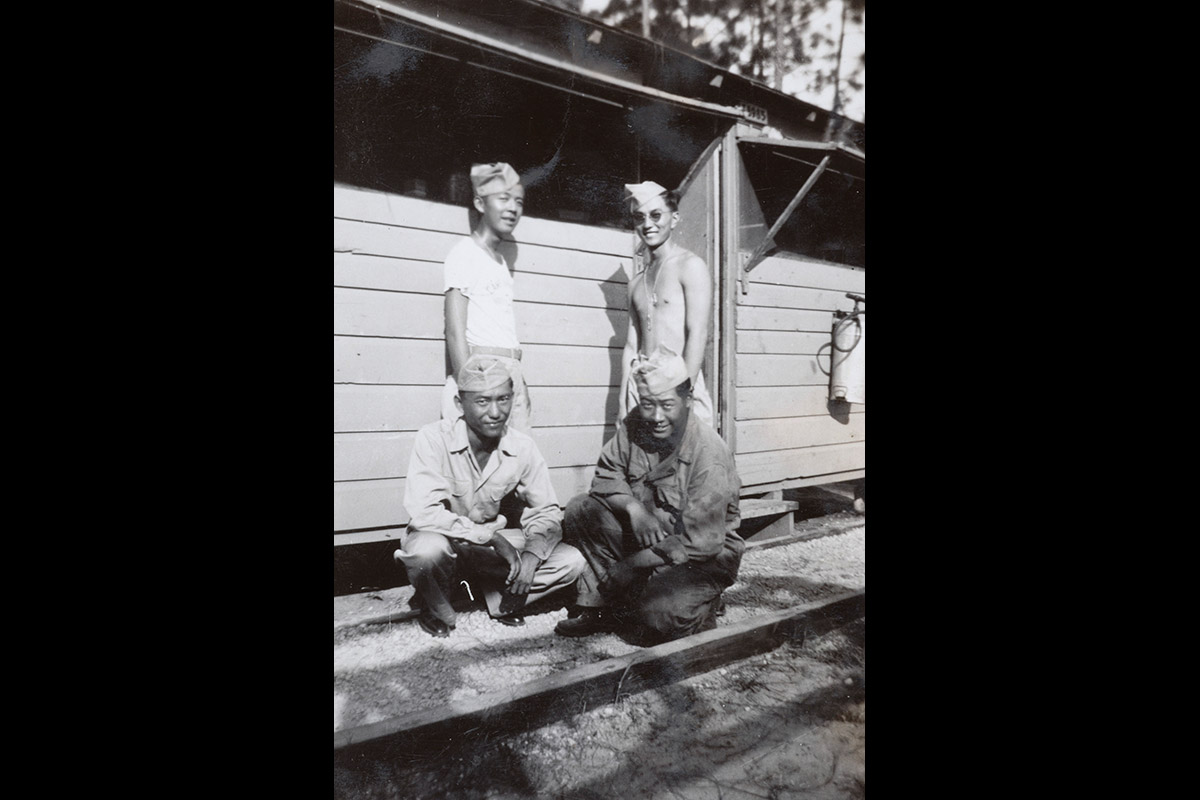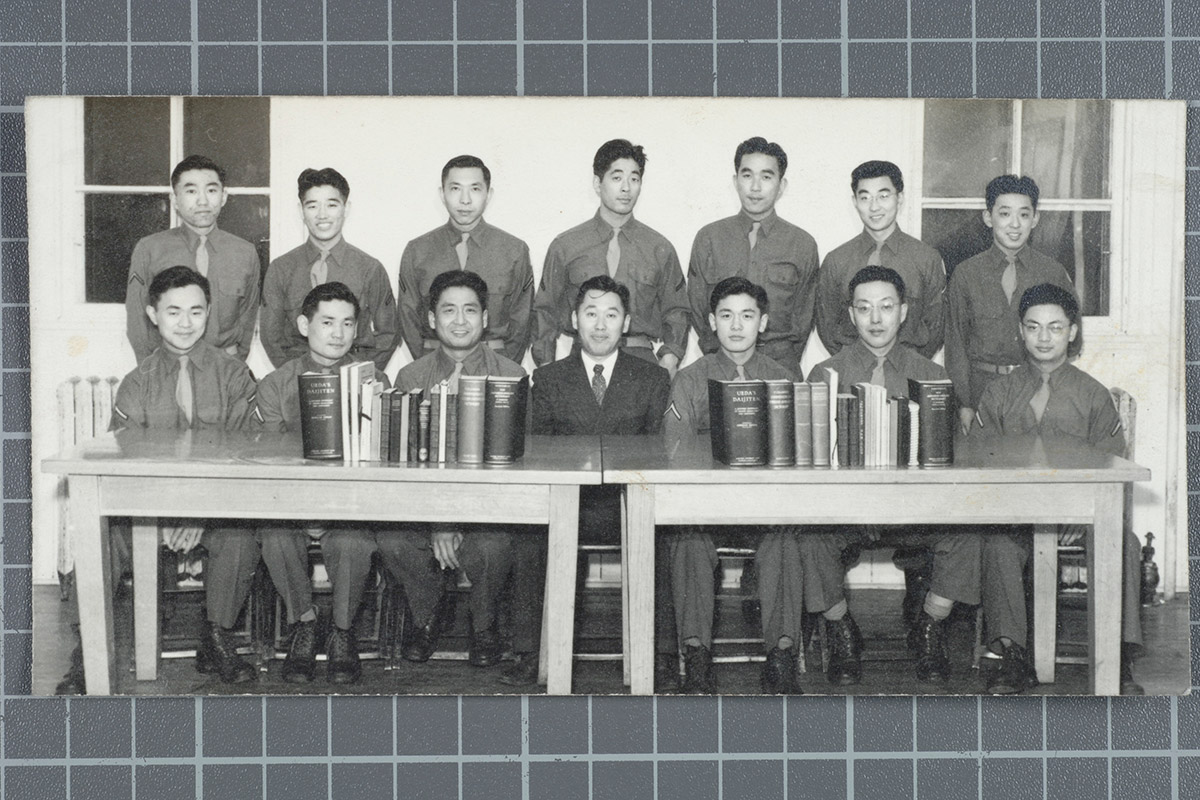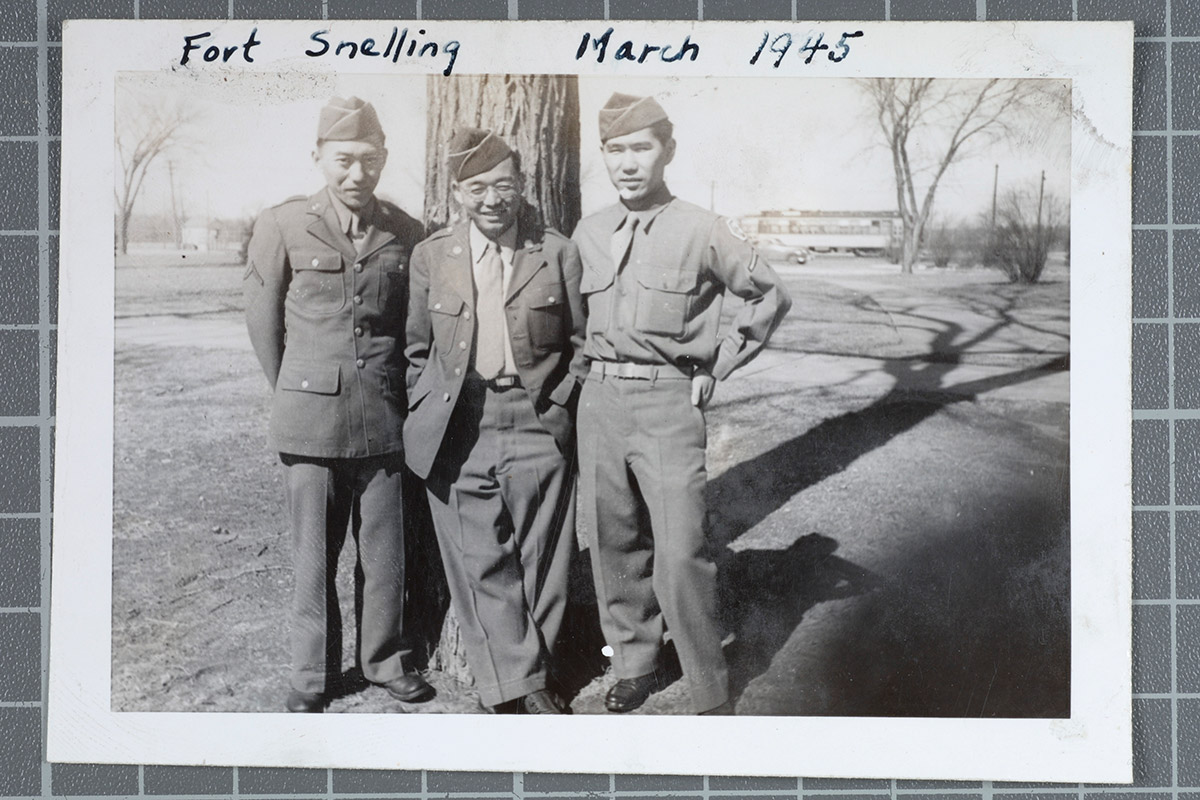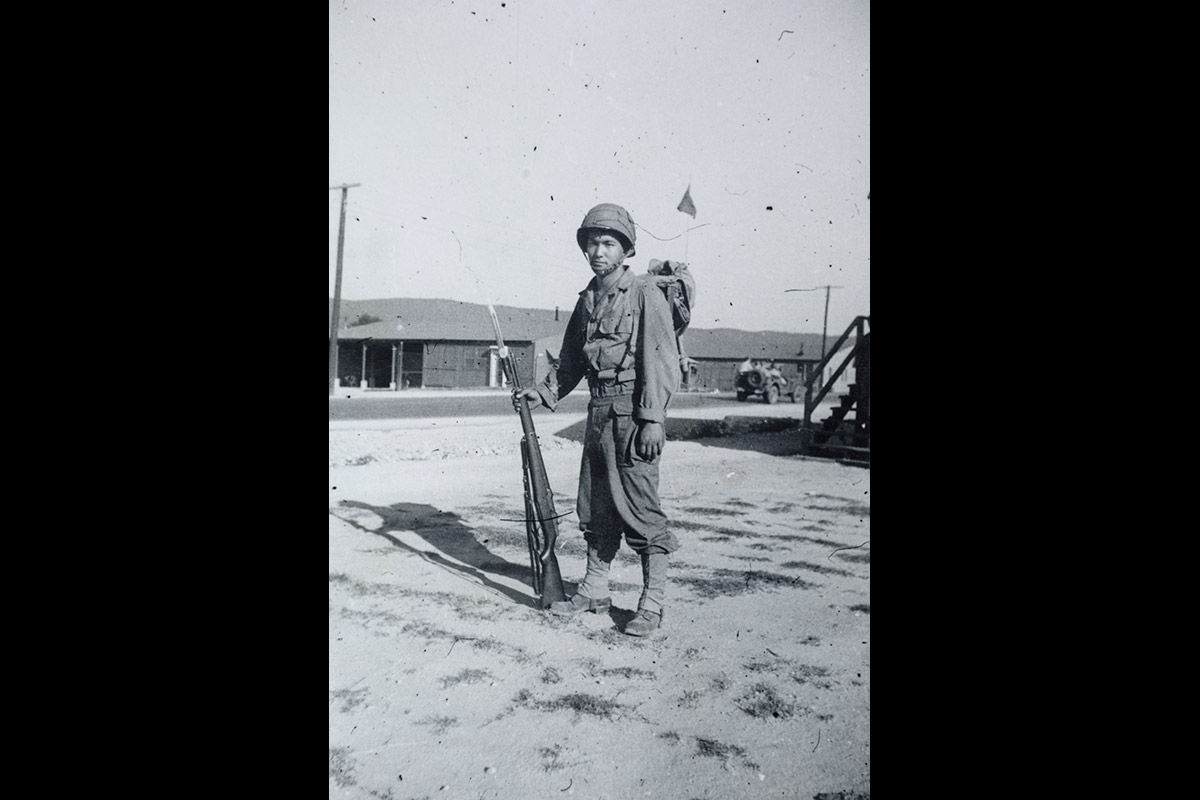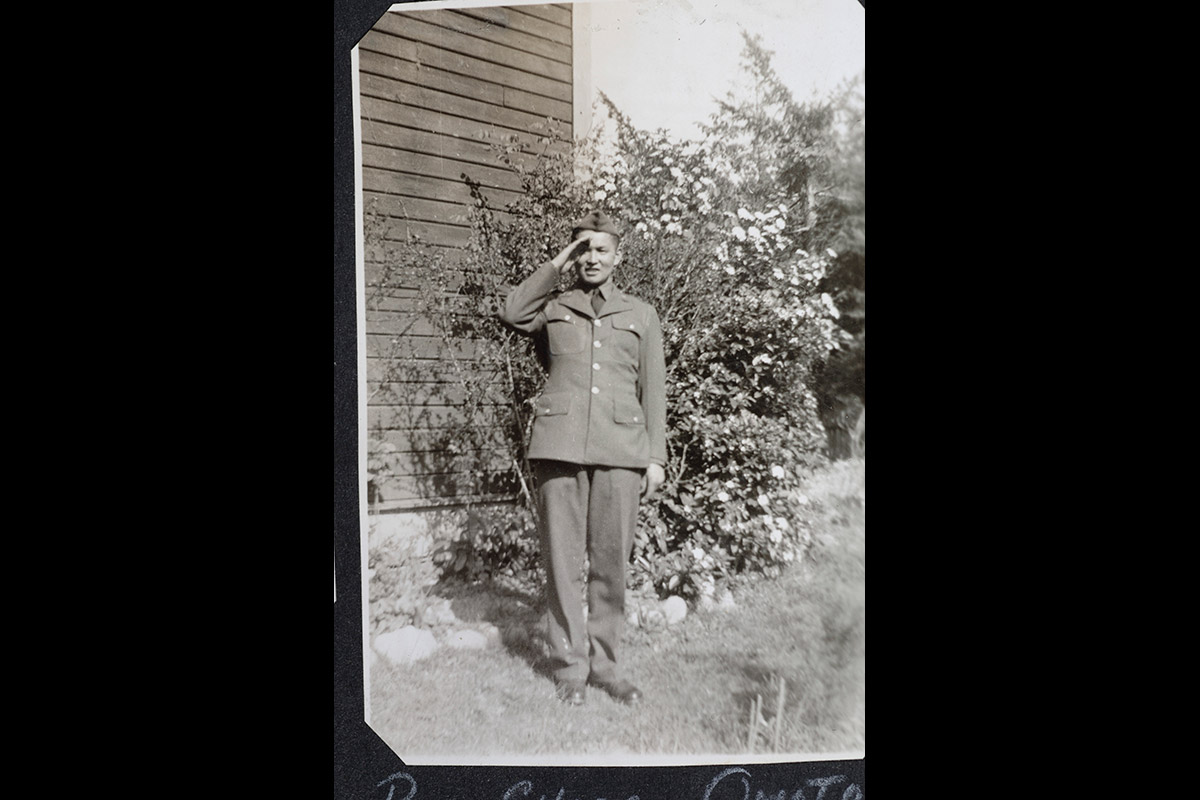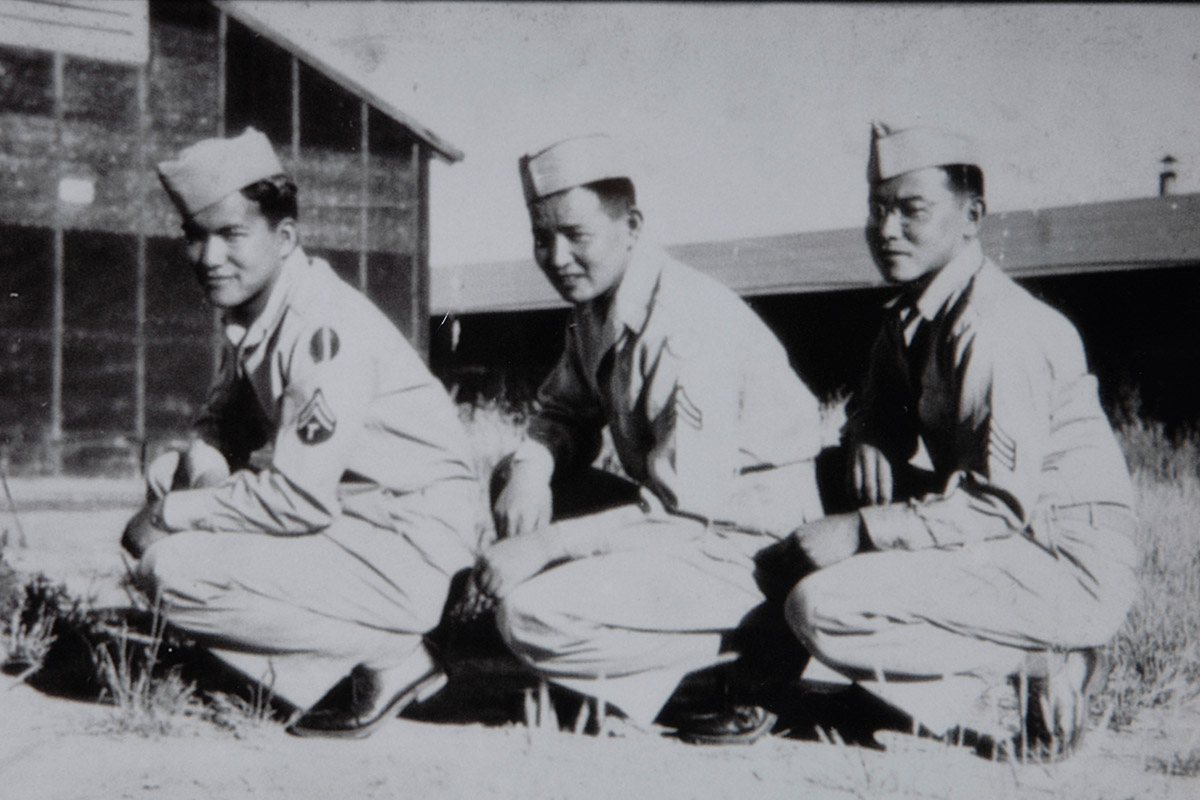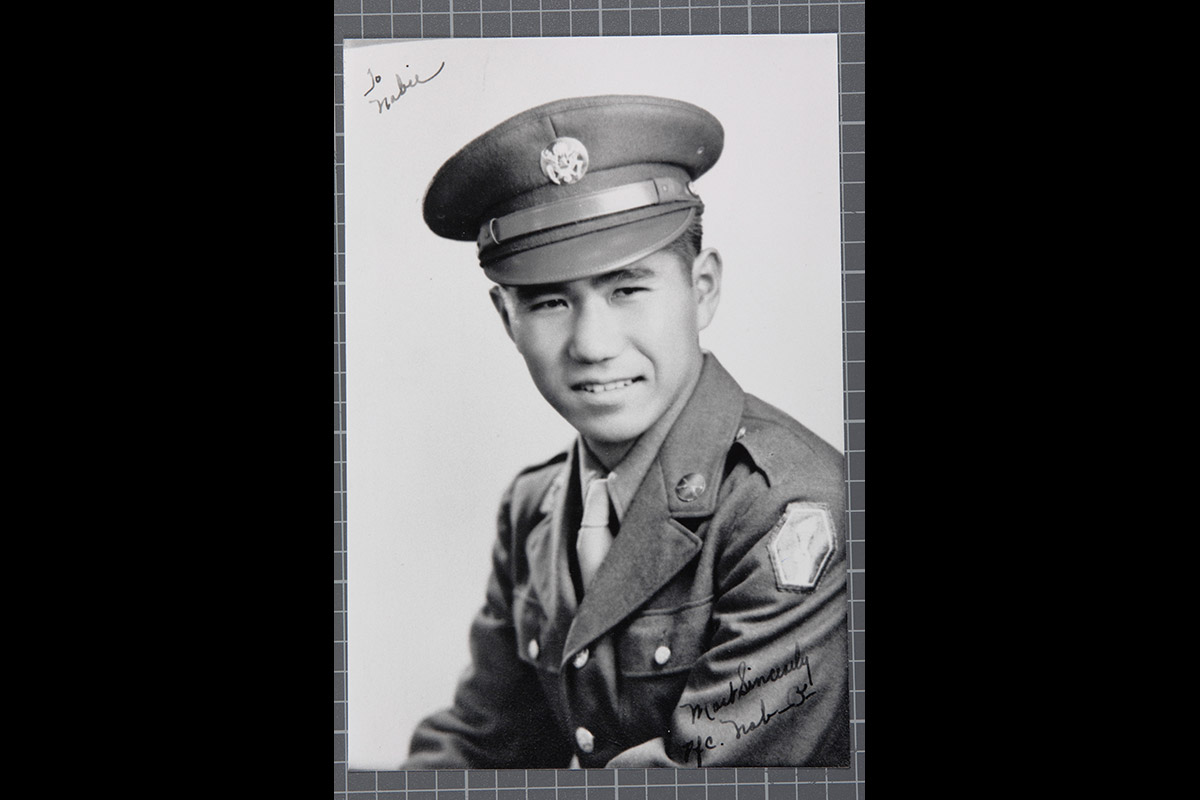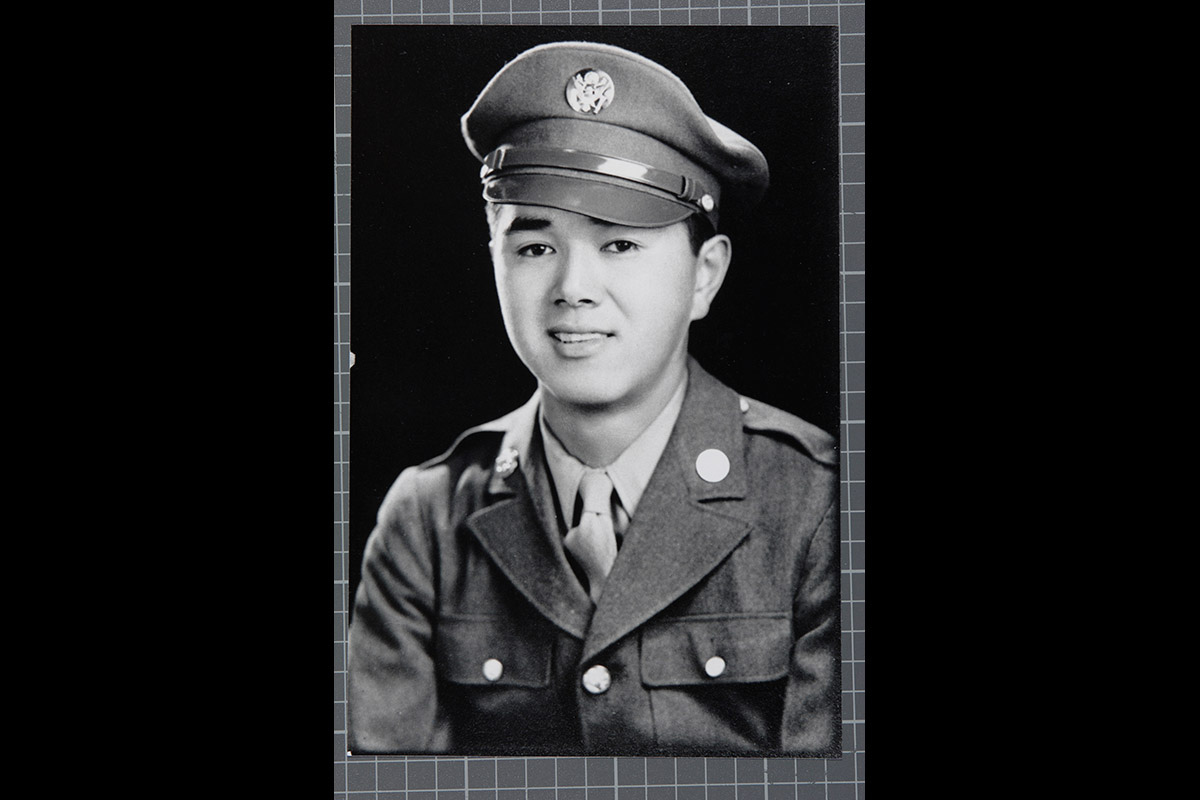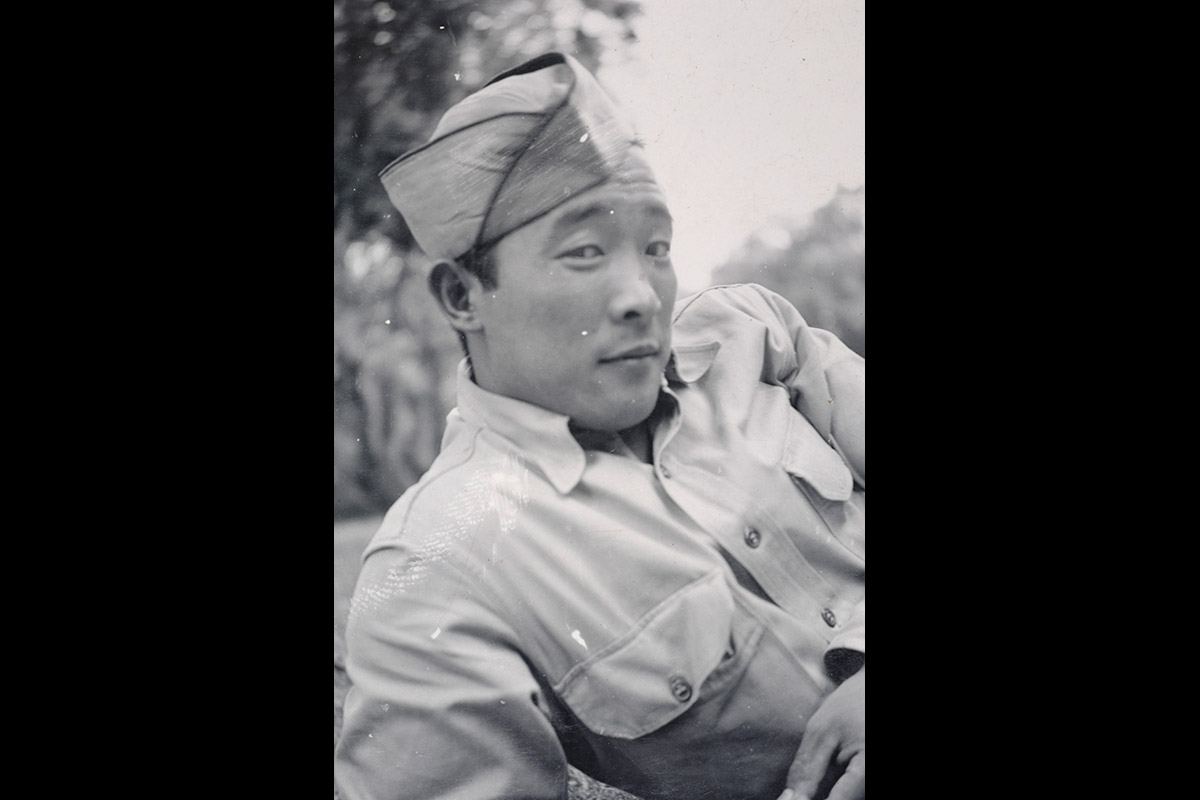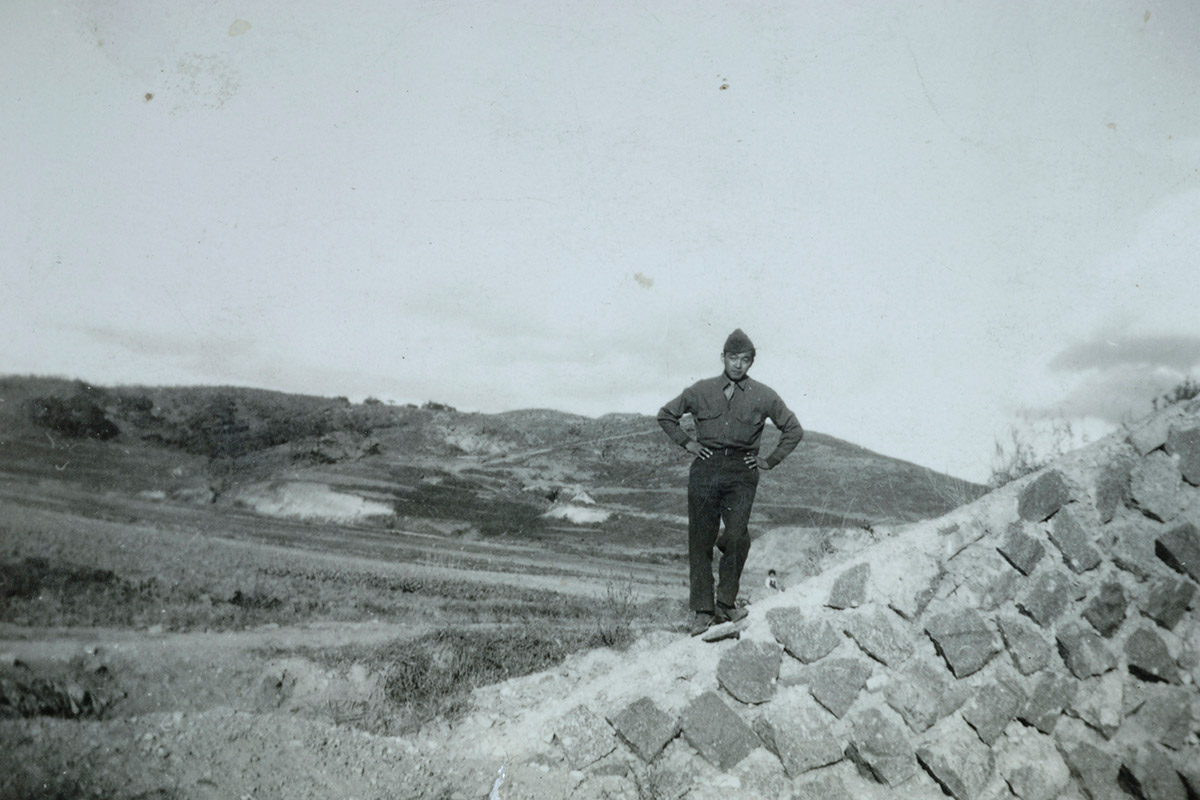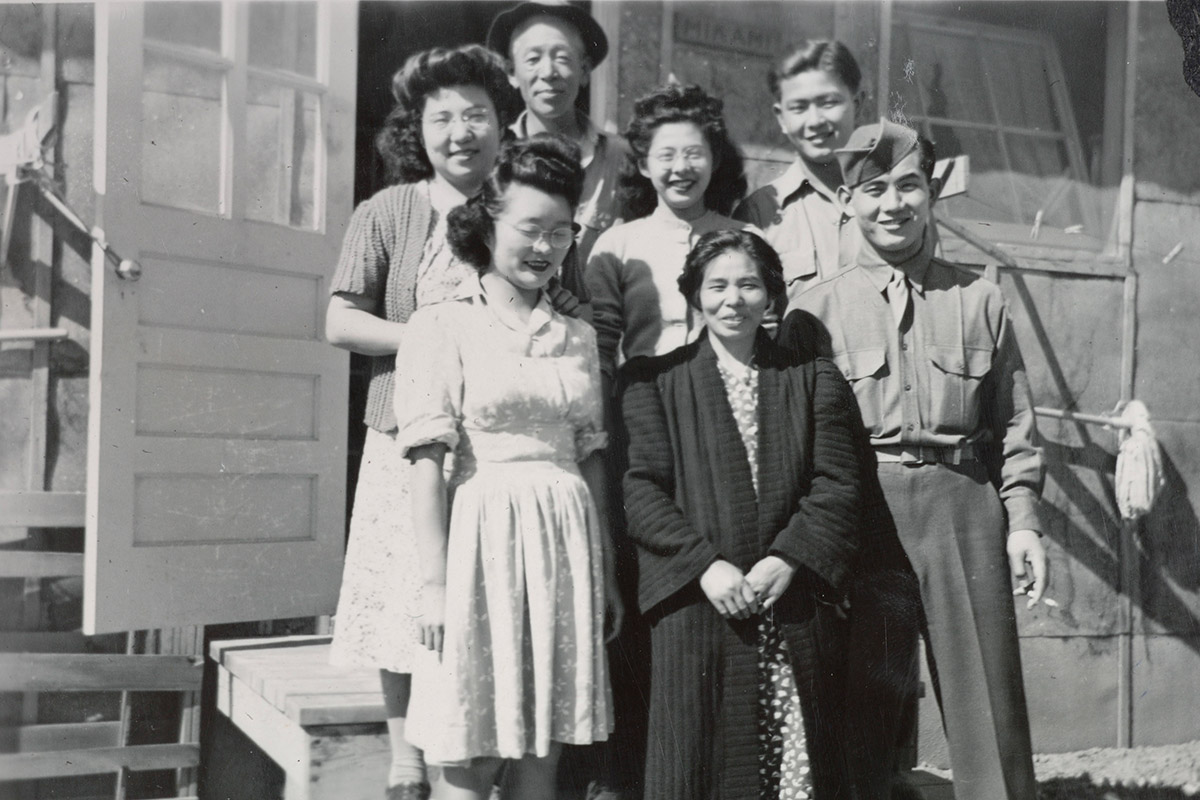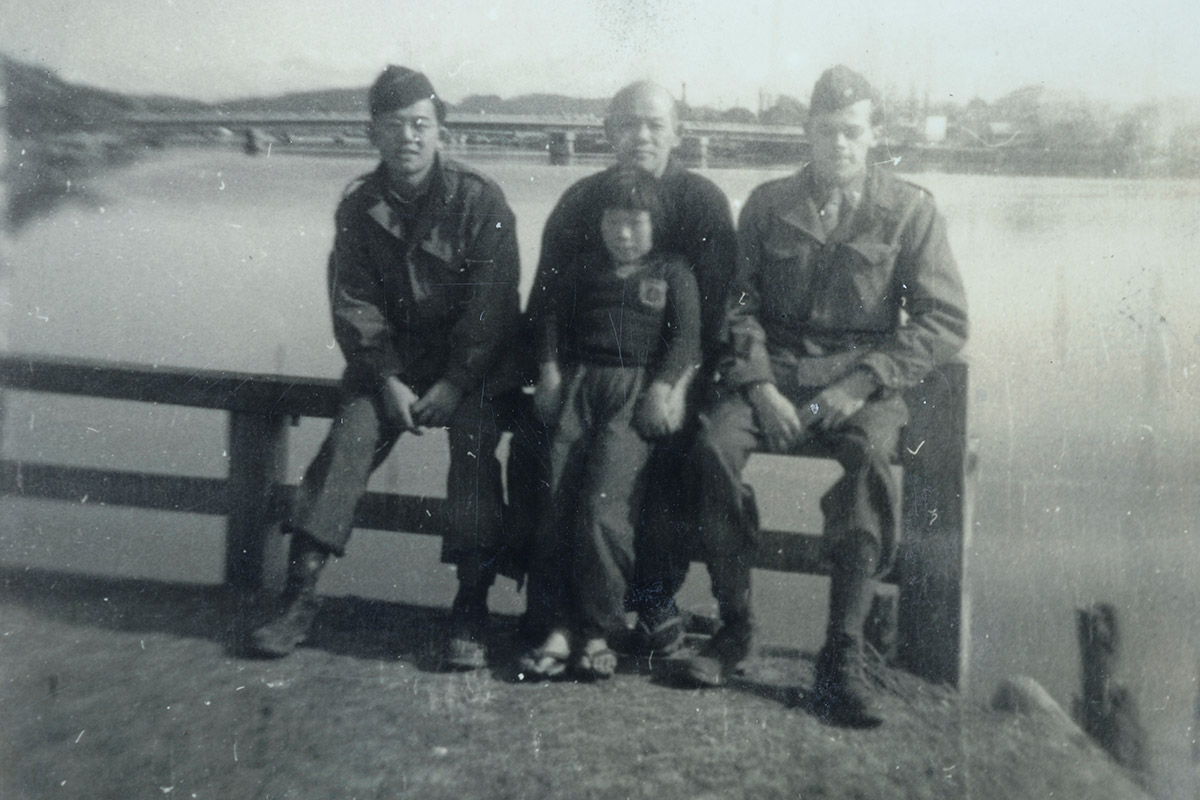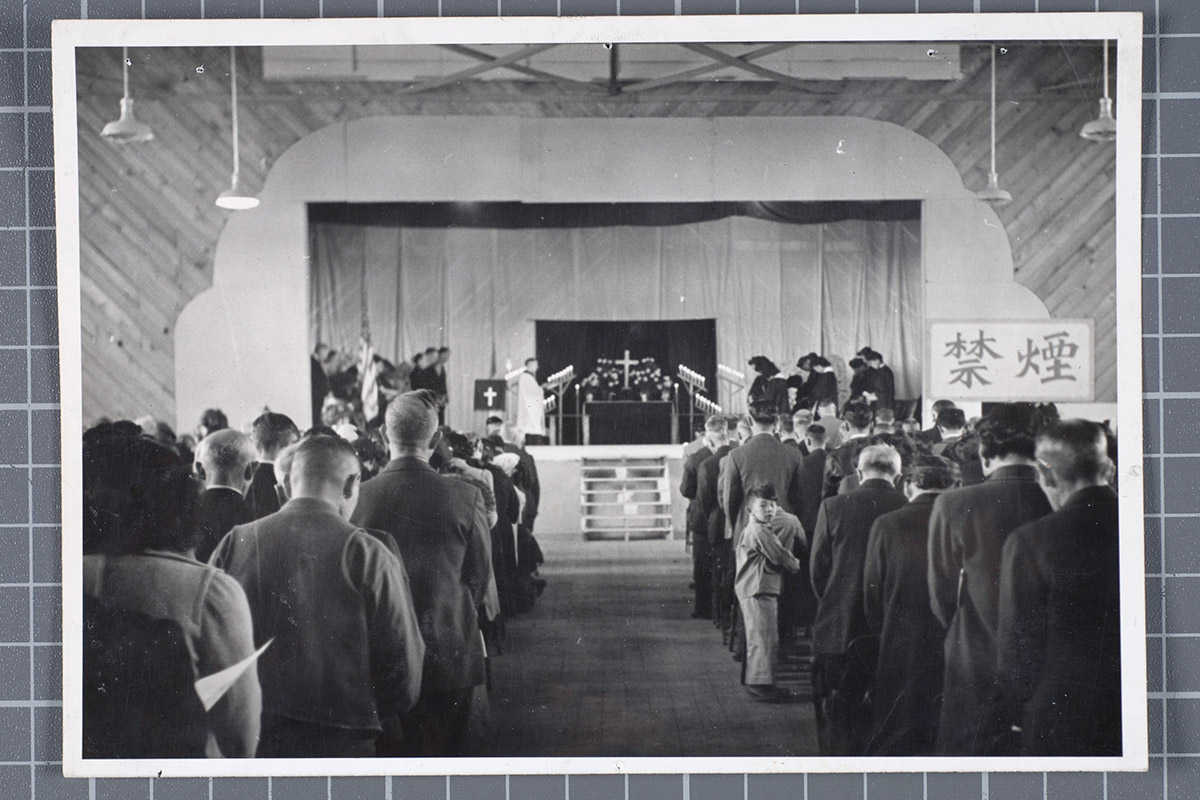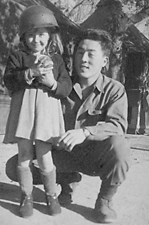
Harry Koba, Italy
Sixty–six men and two women from Bainbridge Island's Nikkei community served in the armed services during WWII, joining more than 33,000 nationwide. Six Island Nisei were already serving in the Army when the war began. Enlistment of Nikkei was severely curtailed at that time, and all Nikkei were reclassified IV–F (unfit for the military) or IV–C (enemy alien) by September 1942. Not until 1944 were these citizens allowed to enlist again; drafting of Nikkei began again at that time as well. In addition to the many stateside positions filled by Nikkei, Japanese Americans served heroically in both theaters.
The highly decorated 442nd Infantry Battalion included sixteen men from Bainbridge Island. The all–Nisei unit saw brutal fighting in Italy and France and suffered the highest combat casualty rate of any American unit. Mo Nakata, Art Koura, and William Okazaki were the first Islanders seriously injured with the 442nd. In the Pacific, the Military Intelligence Service, also including sixteen Island men, was one of the best kept secrets of the war. Praised by commanders from MacArthur on down, they acted as interpreters and interrogated captured prisoners of war. Their translating skills allowed commanders to anticipate enemy action.
General MacArthur: "Never in military history did an army know so much about the enemy prior to actual engagement." Major General Merrill who ordered his men to protect with their lives the Nisei of the MIS: "I couldn't have gotten along without them." Major General Willoughby: "The Nisei shortened the Pacific war by two years and saved possibly a million American lives."
Slideshow
A collection of photos of Bainbridge Island Nisei in the military
In her book, In Defense of Our Neighbors, Mary Woodward illustrates the dichotomy that Nisei Soldiers faced as they fought for their country while their families were imprisoned without due process or guilt back home:
Fifteen months before the army allowed the Nikkei to return to the West Coast, Mo "Pork Chops" Nakata and Art Koura came home for a visit. A Review editorial explained, "Art and 'Pork Chops,' as 'American' a pair as ever trod the corridors of Bainbridge High School, were permitted to visit because they wear the uniforms of the United States Army. Uncle Sam, who soon may ask them to die for him, couldn't very well tell them they couldn't come home on furlough." Although soldiers visited the Island, the rest of the Nikkei remained incarcerated in the camps until nearly the end of the war.
The following are images of Bainbridge Island Nisei, in alphabetical order, who served in the military, mostly in the World War Two era, but some in more recent years.
 Henry Egashira - Circa 1960s.
Henry Egashira - Circa 1960s. Kee Kitayama in Uniform - 1947
Kee Kitayama in Uniform - 1947 Ted Kitayama, Satoru Sakuma (MIS), Kee Kitayama, Minoru Shishido. Feb 1947.
Ted Kitayama, Satoru Sakuma (MIS), Kee Kitayama, Minoru Shishido. Feb 1947. John Koba served in B company, 4th Regiment of the 442nd Regimental Combat Team in the Pacific.
John Koba served in B company, 4th Regiment of the 442nd Regimental Combat Team in the Pacific. Harry Koba served in the 442nd Regimental Combat Team
Harry Koba served in the 442nd Regimental Combat Team Addressed to "Porky" (Mo Nakata. ) Twin Falls, ID. 1943. Art Koura served in the 442nd Regimental Combat Team.
Addressed to "Porky" (Mo Nakata. ) Twin Falls, ID. 1943. Art Koura served in the 442nd Regimental Combat Team. Nob Koura served in the Army in Italy
Nob Koura served in the Army in Italy Paul served in the Army Military Intelligence Service (MIS)
Paul served in the Army Military Intelligence Service (MIS) Paul served in the Army Military Intelligence Service (MIS)
Paul served in the Army Military Intelligence Service (MIS) Bottom right: Paul Ohtaki
Bottom right: Paul Ohtaki Okazaki Brothers: Left to right. Back: Kete (442), Shiro, George (MIS), Seiji (MIS). Front: Rose (Married to Shiro), Bill (442), and Naoshi (Nibs - 442) Masu Okazaki's husband died in Minidoka. Five of her six sons served in the military in WWII.
Okazaki Brothers: Left to right. Back: Kete (442), Shiro, George (MIS), Seiji (MIS). Front: Rose (Married to Shiro), Bill (442), and Naoshi (Nibs - 442) Masu Okazaki's husband died in Minidoka. Five of her six sons served in the military in WWII. Bill Okazaki served in the 442nd Regimental Combat Team
Bill Okazaki served in the 442nd Regimental Combat Team George served in the Army Military Intelligence Service (MIS)
George served in the Army Military Intelligence Service (MIS) George served in the Army Military Intelligence Service (MIS)
George served in the Army Military Intelligence Service (MIS) Kete Okazaki served in the 442nd Regimental Combat Team in Italy.
Kete Okazaki served in the 442nd Regimental Combat Team in Italy. Kete Okazaki is on the far right.
Kete Okazaki is on the far right. Nibs served in the 442nd Regimental Combat Team
Nibs served in the 442nd Regimental Combat Team Seiji is on leave visiting mother in Minidoka. He served in the Army Military Intelligence Service (MIS).
Seiji is on leave visiting mother in Minidoka. He served in the Army Military Intelligence Service (MIS). Seiji served in the Army Military Intelligence Service (MIS)
Seiji served in the Army Military Intelligence Service (MIS) Seiji Okazaki is on the top left. MIS school, Fort Snelling, MN.
Seiji Okazaki is on the top left. MIS school, Fort Snelling, MN. Left to right: Seiji Okazaki, Takashi Sakuma, Noboru Oyama. March 1945.
Left to right: Seiji Okazaki, Takashi Sakuma, Noboru Oyama. March 1945. Sada served in the Army Military Intelligence Service (MIS)
Sada served in the Army Military Intelligence Service (MIS) Setsuo Omoto.
Setsuo Omoto. Photographed while visitng their mother in Minidoka. Left to right: Masakatsu (442), Setsuo (442), and Taketo (med-tech)
Photographed while visitng their mother in Minidoka. Left to right: Masakatsu (442), Setsuo (442), and Taketo (med-tech) Nob Oyama in Army Uniform
Nob Oyama in Army Uniform Paul Sakai served in the Military Intelligence Service (MIS)
Paul Sakai served in the Military Intelligence Service (MIS) Satoru Sakuma (Tad Sakuma's Brother) in Military Uniform
Satoru Sakuma (Tad Sakuma's Brother) in Military Uniform Korea
Korea Visits such as this one occurred in all of the camps. Young men were fighting for freedom abroad while their family and friends were denied their freedom back home. Left to right: Miyoko Mikami, Kay Sakai Nakao, Kazuo Ogawa, Toshiko Mikami, Kikuno Mikami Ogawa, Akira Shibukawa, Mamoru Shibukawa.
Visits such as this one occurred in all of the camps. Young men were fighting for freedom abroad while their family and friends were denied their freedom back home. Left to right: Miyoko Mikami, Kay Sakai Nakao, Kazuo Ogawa, Toshiko Mikami, Kikuno Mikami Ogawa, Akira Shibukawa, Mamoru Shibukawa.
 Held in the Hunt High School Gymnasium inside Minidoka, this was a combined Protestant, Catholic, and Buddhist service.
Held in the Hunt High School Gymnasium inside Minidoka, this was a combined Protestant, Catholic, and Buddhist service.

